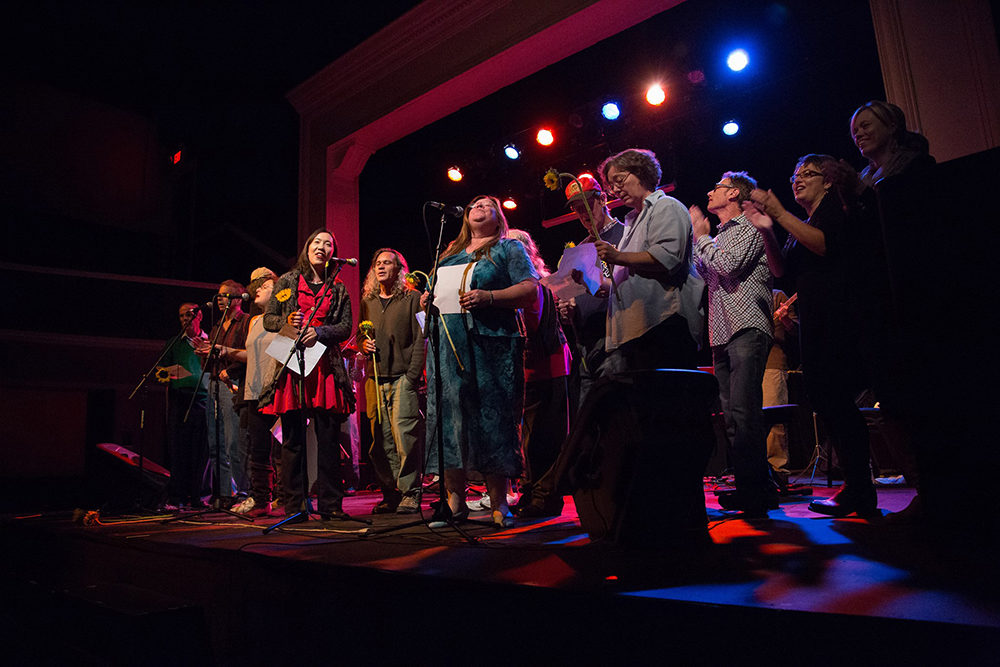Power of Culture Blog
Opportunities & Resources for Orgs – Oct 25
A monthly round-up of grants, technical assistance resources, and opportunities for creative and cultural organizations
Michael Ibrahim, Program Manager

Most nonprofit organizations are ‘small’. ‘Small’ is in quotes here because, while an organization’s gross receipts may be one measure of its scale, it is hardly the only measure. Lives changed, participants served, problems solved, and public value delivered are all other important measures of an organization’s impact and effectiveness. Those of us who volunteer or work for these ‘small’ nonprofits often feel our social impact transcends the figures on our QuickBooks statements. But in today’s world, how can small shops compete with large organizations for audiences, funding, and sustainability?
First, let’s go back to the point that most nonprofit organizations in the United States are ‘small’. According to the Urban Institute, even after excluding organizations with gross receipts below the $50,000 IRS 990EZ filing threshold, 66.9% of registered nonprofits have less than $500,000 in annual expenses. 30% alone have annual expenses between $50,000 and $100,000. Most of our interactions, services, and social change is delivered by small nonprofits. These organizations tend to bring a deep familiarity with the challenges faced in particular communities, which are usually very specific and unique. Becoming a large organization may not always be a good idea; with size comes complexity, bureaucracy, constant funding demands, and sometimes, a loss of organizational culture.
Of course, earned revenue is an important part of any nonprofit’s financial plans, and many small organizations have been quite effective at using social media, strategic partnerships with other organizations, updated branding, intentional involvement in the community, Google Grant for nonprofits, and identifying and supporting “Organizational Evangelists” to build that side of the business model. Individual philanthropy has long been the centerpiece of any nonprofit’s strategic fundraising plan. It is an opportunity to build loyalty, connect with people who love your organization and its mission, raise those valuable unrestricted dollars, plan donor-centric Moves Management, and diversify your contributed revenue portfolio.
Meanwhile, community foundations, family foundations, and government funders have been lowering minimum budget size eligibility in recent years to better support smaller, community-based organizations. For example, Cultural Investment Portfolio Projects grants were established by Mass Cultural Council in 2016 specifically to expand our funding to organizations below $50,000 in annual cash expenses. Organizations only need minimum annual cash cultural expenditures of $10,000. These organizations do not complete rigorous financial reporting to us and the application is simple and streamlined. We’ve been able to fund at least 50% of applications received in each of the last four cycles.
The Cultural Investment Portfolio, our operating support program, supports organizations as small as $50,000 in annual cash expenses. In fact, 28% of our Portfolio is either all-volunteer, or has just one paid staff member. 39% have budgets under $500,000. Many of our advisory services and capacity building initiatives are designed with small organizations in mind. We program numerous small shop convenings (part strategy, part group therapy) around the Commonwealth and regularly offer workshops on nonprofit best practices, including financial management, leadership transition, capitalization and organizational full cost, reserve building, facility planning, cash management, board governance, human resources, public safety, emergency preparedness, and more. Mass Cultural Council services are free to any nonprofit in Massachusetts.
In the Portfolio, we visit our grantees once every four years to help create strategy and build capacity, supporting their journey towards sustainability and mission effectiveness. In these visits, much of our work centers around building a case for support. It is common for leaders of small organizations to enter this conversation with a scarcity mentality around sustainability, especially when one thinks about recent large capital campaigns, million-dollar grants to national and international nonprofits, and competition for declining audiences. But for the small, community-based organization, the case and its impact can be stronger, deeper, and more relevant than many large organizations. Coming out of our visits, we’ve collected a few tips that our smaller organizations have used to break out of a scarcity mentality and deliver a strong case for support: